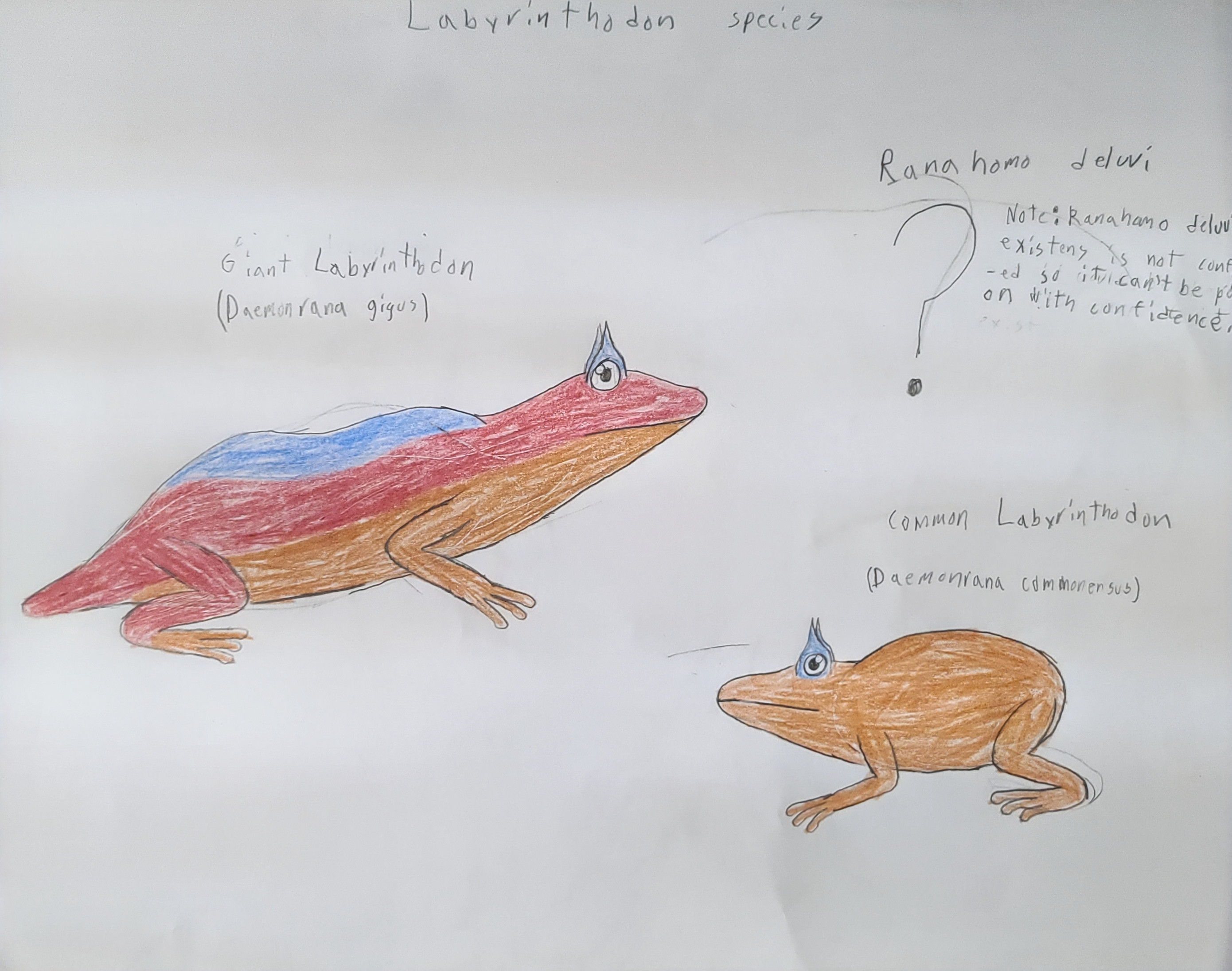HOME | DD
 SpecZooBraydenR — Labyrinthodon species
SpecZooBraydenR — Labyrinthodon species

Published: 2023-06-25 17:45:55 +0000 UTC; Views: 317; Favourites: 3; Downloads: 0
Redirect to original
Description
IntroductionLabyrinthodons, despite the name, are not related to the extinct amphibians of the same name. But they are relatives of some South America horned frogs, as can be seen by their horns and teeth (which are just extentions of the skull). They are a common sight in the forest, swamps, and ponds on the crystal archipelago. They are also very vocal as they can be heard croaking through the night.
Daemonrana commonensus
D. commonensus is the more common of the 2 confirmed species. They behaviorally are similar to other horned frogs eating anything they can fit in their mouths. These animals use their horns for display, unlike other horned frogs. These displays aren't very exciting, with the 2 males just walking parallel to each other while croaking.
Daemonrana gigus
D. gigus is the largest confirmed frog to exist. They can grow up to 3 ft. long. Due to this immense size for a frog, they can eat some of the massive reptiles they share there home with, but only when they are babies. One distinguishing trait of this species is a small tail. Scientists aren't exactly sure why they have this, but it is thought this is just a random mutation that doesn't positively or negatively affect the animals' health.
Ranahomo deluvi
R. deluvi is a cryptid that is unconfirmed to exist. However, there have been several unidentified croacks and bizarre footprints. It is incredibly hard to describe it as bipedal but not humanoid. It has 2 glowing eyes and a mouth on the top of its head. A sketch by an eyewitness will be shown but separate from the basics of the Daemonrana group.























